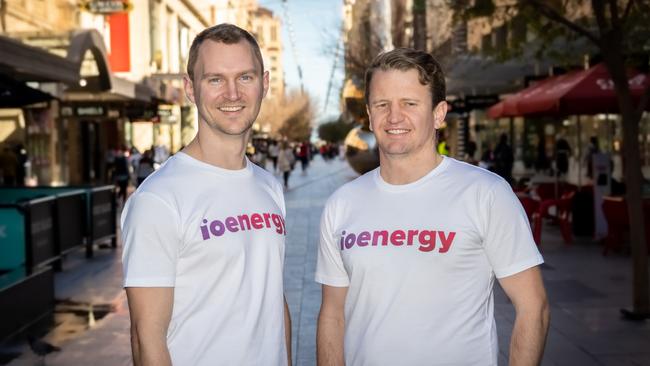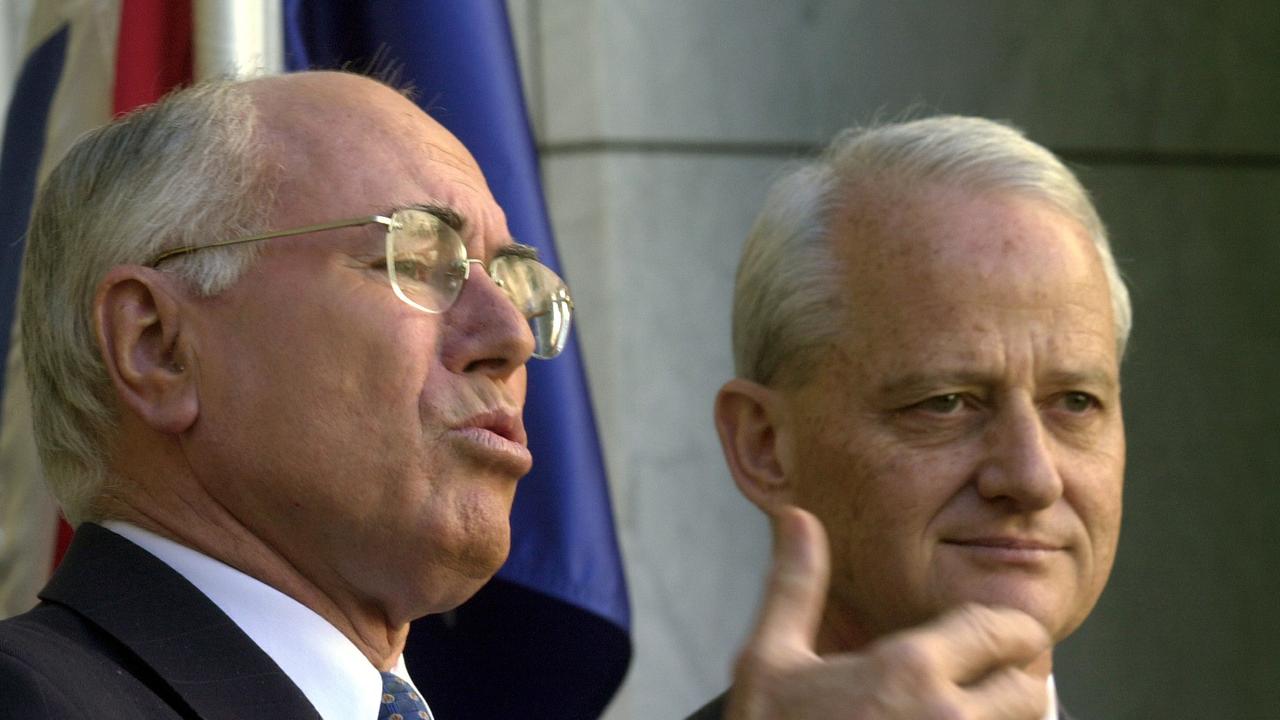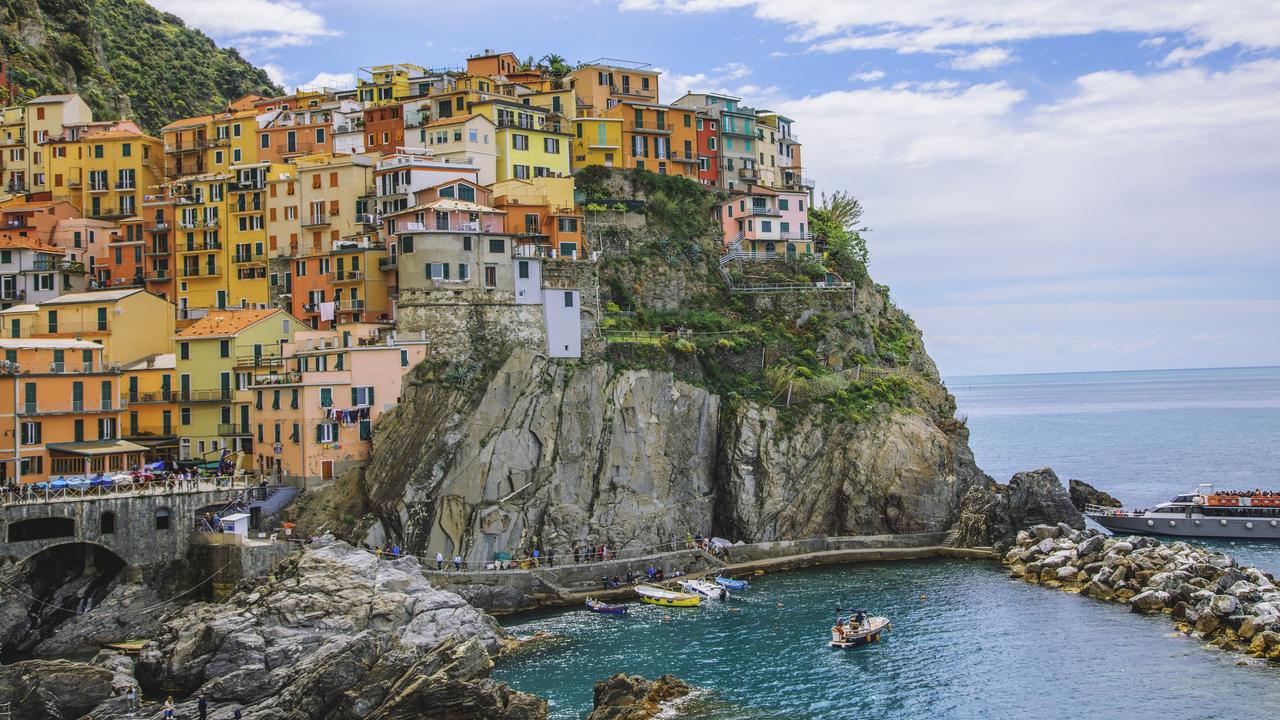Lot Fourteen: cheap and green renewable machine
South Australia is the poster child for Australian renewable energy, with 65.7pc of its power from renewables in 2021.

South Australia is undoubtedly the poster child of Australian renewable energy, with 65.7 per cent of its power coming from renewables in 2021 – more than twice the proportion of its nearest competitor (unless one counts the almost totally hydro-electricity-powered Tasmania).
That fact explains why South Australian “energy tech” start-up iO Energy, which wants to optimise the use of cheap renewable energy, is in business in the state.
“The reason we’re in South Australia is because we think this state is the future of energy,” says Luke Morton, co-founder and chief operating officer of iO Energy.
“There’s more wind and solar here than in any other grid of its size in the world, and it’s a really large grid.
“SA is also a crystal ball into the future of energy. We expect that what happens here is going to happen nationally and internationally over the next five to 15 years. Everyone realises that we need more renewable energy supply, but we also need more renewable demand.”
That is at the hub of iO Energy’s business model, which is to help Australian households and businesses pay less for clean electricity by becoming smarter users; and in so doing, help to build that demand for renewable electricity.
The crucial concept behind iO Energy’s offering is to coax a change in consumer behaviour to capitalise on the current shape of the demand curve in SA, in which solar power is overabundant and cheap during the day.
Based at Adelaide’s innovation hub Lot Fourteen, iO Energy was born when Morton and his co-founder, his former Army colleague Rob Morris, saw an opportunity for consumers who didn’t have space for solar panels, such as those living in townhouses or apartments, to take advantage of excess grid power.
“We thought there was something a bit crazy happening with energy prices at particular times of day, with an oversupply of renewables. Power prices were negative sometimes, particularly in South Australia where we have a high amount of wind and solar.
“In the middle of the day, typically there’s heaps of solar power being generated, and the cost of delivering that power is much lower than at other times of the day,” says Morton.
“People with rooftop solar were benefiting from that, but other people were not. By shifting people’s electricity usage – for example, in heating water or charging a battery – into that middle-of-the-day time, we can lower people’s power bills while also lessening their carbon footprint.”
Launched in August 2020, iO Energy partners with retailer Energy Locals to offer homes and businesses cheap daytime energy plans. The company uses a proprietary software platform and data analytics gathered from smart meters, which record the time-of-use of energy, to understand customer load profiles and, in turn, help customers understand what their electricity usage looks like, and how they can improve it. iO uses artificial intelligence and machine learning to identify patterns in consumer behaviour, as well as customer archetypes and clusters – distinguishing who are the best electricity consumers and who are the worst in terms of both the cost of their consumption and their use of renewables.
“We harmonise your electricity usage so you use more when it is both cheapest and greenest, through grid-integrated appliances and the Internet of Things. We call this the Internet of Energy,” says Morton.
He says the company’s plans are particularly well suited to households without solar panels, such as apartments, heritage-listed buildings or dwellings with too much shade on the roof.
It is expected many of the company’s customers will install batteries that can be charged from the grid at cheap prices then power the house at night.
By channelling demand to the middle of the day, Morton says iO Energy can make consumer load profiles – and also rooftop solar generation profiles – more in tune with the fluctuations of the broader energy market.
“We think that will become increasingly important, and that retailers will increasingly want to incentivise that, using a variety of mechanisms. That way, you’re improving renewable demand, which we need to do to meet our net zero-emissions goals.”
Simply put, Morton says iO Energy aims to reduce customers’ energy costs, increase their renewables consumption, and improve how they consume and generate electricity.
“All of our products and services are going to support that main effort, of paying less for clean electricity.
“Obviously, bigger businesses have even more of a vested interest in this than households, but it’s the same from our point of view – we want to be our customers’ clean energy ‘concierge’. But also, we see a big opportunity to help major enterprises navigate the volatility of the electricity market.”
The service is expanding nationally, but Morton says iO Energy has even bigger plans.
“The clean-energy plans we have in the market are our initial foray into the market, but it’s not even half what we intend to do. There are essentially three opportunities to play all at once in this space. First, there’s the clean-energy transition; second, there’s electrification of assets and industries; and third there’s digital disruption. We believe the energy industry is at the same point that the banking sector was a decade ago – it’s ripe for improvement in terms of tech and customer experience, and we’re going to be right in the middle of that.”
Lot Fourteen has been a “fabulous place to be based”, Morton says. “We’ve been able to rub shoulders and start partnerships with a number of other innovative clean tech and climate tech companies. There’s a huge amount of collaboration … there.
“South Australia and Lot Fourteen is a great combination for us because there are local SA start-ups who are building complementary products that we can go to market with; there are a large number of renewable generators that are keen to work with innovative procurers; and there are resources such as the Australian Institute for Machine Learning, which has been helping us to develop some of our in-house tech. And all of that is in the same place,” he says.


